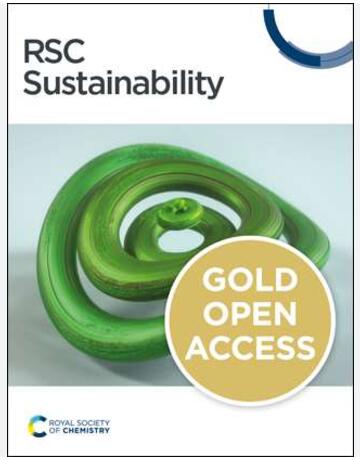现代污水处理厂去除全氟和多氟烷基物质 (PFAS) 的一些可能工艺配置
IF 3.3
3区 环境科学与生态学
Q2 ENVIRONMENTAL SCIENCES
引用次数: 0
摘要
在全球污水处理厂(WWTPs)的进水、出水和污泥/生物固体中都检测到了全氟和多氟烷基物质(PFASs)。由于 PFASs 具有严重的持久性和/或强 C-F 键,随着时间的推移,它们有可能在人类、野生动物和环境中进行生物累积,因此会引发公共健康问题。大型污水处理厂的传统工艺通常无法有效去除废水和污泥中的 PFASs,因此需要采用先进的处理技术来去除 PFASs。本研究旨在简要介绍 (i) 废水和污泥中 PFASs 的修复技术;(ii) 回顾大型污水处理厂中 PFASs 的去除情况;(iii) 讨论现代污水处理厂中 PFASs 修复废水处理系统的一些可能理论配置;最后 (iv) 提供未来发展方向。关于去除实际废水中 PFASs(尤其是短链 PFASs)的处理技术的技术经济评估和优化,以及由去除 PFASs 的先进创新高效处理技术组成的全规模污水处理厂的性能和相关成本(即建设、运行、维护、化学、能源和摊销),仍需进一步研究。本文章由计算机程序翻译,如有差异,请以英文原文为准。
Some Possible Process Configurations for Modern Wastewater Treatment Plants for Per- and Polyfluoroalkyl Substances (PFASs) Removal
Per- and polyfluoroalkyl substances (PFASs) have been detected in the influent, effluent, and sludge/biosolids of wastewater treatment plants (WWTPs) globally. Due to their potential to bioaccumulate in humans, wildlife, and the environment over time owing to their seriously persistent nature and/or strong C-F bonds, PFASs can cause public health concerns. Conventional processes in full-scale WWTPs are usually inefficient in PFASs removal from wastewater and sludge, and advanced treatment technologies are needed for PFASs removal. This study intends to briefly (i) summarize the technologies for PFASs remediation in wastewater and sludge; (ii) review PFASs removal in full-scale WWTPs; (iii) discuss some possible theoretical configurations for the wastewater processing train of modern WWTPs for PFASs remediation; and finally (iv) provide future directions. Further research regarding the techno-economic assessment and optimization of treatment technologies in removing PFASs (especially short-chain PFASs) from real wastewater as well as the performance of full-scale WWTPs consisting of advanced innovative efficient treatment technologies for PFASs removal and associated costs (i.e., construction, operation, maintenance, chemical, energy, and amortization) is still required.
求助全文
通过发布文献求助,成功后即可免费获取论文全文。
去求助
来源期刊

Sustainability
ENVIRONMENTAL SCIENCES-ENVIRONMENTAL SCIENCES
CiteScore
6.80
自引率
20.50%
发文量
14120
审稿时长
17.72 days
期刊介绍:
Sustainability (ISSN 2071-1050) is an international and cross-disciplinary scholarly, open access journal of environmental, cultural, economic and social sustainability of human beings, which provides an advanced forum for studies related to sustainability and sustainable development. It publishes reviews, regular research papers, communications and short notes, and there is no restriction on the length of the papers. Our aim is to encourage scientists to publish their experimental and theoretical research relating to natural sciences, social sciences and humanities in as much detail as possible in order to promote scientific predictions and impact assessments of global change and development. Full experimental and methodical details must be provided so that the results can be reproduced.
 求助内容:
求助内容: 应助结果提醒方式:
应助结果提醒方式:


